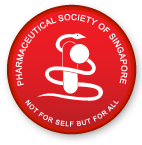A Parent's Worst Nightmare: Medication Overdose
Almost all parents would be familiar with the commonly used fever medication in children - paracetamol; yet paracetamol overdose is still among the top three most common drug-related emergencies seen at KK Women’s and Children’s Hospital (KKH) Accident and Emergency (A&E) department. In this article, we will share a few tips on how to avoid giving too much medication to your children and eventually avoid an overdose.
Keep medications out of children's reach and sight
|
Child: 'Hmmm... This bottle looks interesting. There must be yummy sweets in there since Mummy takes them everyday! Now that no one is watching, I will finish them all!'
Mother: 'Dear, did you see my bottle of high blood pressure medicines? I can't seem to find it anywhere!' |
It is highlighted in all labels and seems like common knowledge, but children continue to have access to medications that should be stored away from their sight. Children are naturally curious; they explore, question and wonder about their environment and learn in the process. At times, new objects of interest can even end up in their eyes or mouths. Hence, choose a storage place in your home that children cannot reach or see. There is no one safe place common for everyone - different families will have different places. Look around your house and decide on the safest place to keep your medicines and supplements.
Do not ‘re-package’ the medication
The efficacy and stability of the medication may be affected when they are removed from their original packaging and stored into another container. It can further confuse children to think that the contents are safe, especially if the same containers are used to store common household food products.
Perhaps the word “candy” or “sweet” can be avoided when administering medications to your child. While it may ease administration of medications by caregivers, associating medications with candy can lead children to mistakenly think that they really are sweets the next time they chance upon it, especially if they are brightly coloured.
Communication among caregivers
|
Husband: Mum, why is May's fever medicine out of the fridge?
Wife: Oh, I just fed her one dose as she is having a fever.
Husband: But I just gave her a dose half an hour ago! |
Often, a sick child may be cared for by more than one caregiver (e.g. mother, father, grandparents, etc,) which could result in multiple administrations of the same medication due to lack or poor communication. Some useful tools would be to have medication administration log sheet, or for families who are more tech savvy, a simple text in the family group chat. Otherwise, it may be easier to have only one person responsible for administering medications and communicate this to the other caregivers.
Communication between healthcare professionals and caregivers are also important as parents will have a more realistic understanding of the situation. It is also important to highlight to caregivers that most medications do not work immediately and giving more doses will not result in a faster effect.
Know your child’s dose
Children are not mini ‘adults’. Their dose is often based on their body weight. Using another child’s medication dosage may under or overdose your child. Using the correct tools when administering medicines is also essential. Use a syringe or medicinal cup or measuring spoon to ensure accurate dosing. Do not use kitchen spoons to measure out liquid medication!

|
One tablespoon can contain up to 3 times the volume of a teaspoon – so picking a wrong spoon may have a dangerous consequence. It is safer to go with a syringe! |
Do not give ‘add-ons’ without consulting a healthcare professional
Do not be tempted to give more of the same medication as oral medications usually take about 30 – 60 minutes to work (sometimes it may take even longer).

|
Piriton, Aerius and Zyrtec are from a class of medications known as antihistamines and helps with itch and runny nose. Giving them all together increases the risk of side effects! |
Think twice before considering to add on other medications you find at home for your child. Although it may sound different, it may contain the same ingredients as what your doctor prescribed. Medications with different active ingredients may also have the same mode of action.
In the event of an overdose
If an overdose of medicine occurs, DO NOT PANIC. The child should be brought to the hospital where doctors can assess that the child’s vital signs, breathing and circulation are stable, and that the airway is clear.
Be sure to note/bring the following to allow a more accurate assessment of the child’s condition:
- Item ingested, together with its packaging. This can greatly help the medical team to identify the agents within the product for timely clinical management.
- Time of ingestion. This can help to inform how much of the agent has entered the body.
- Quantity ingested. More adverse effects will be expected when more products are ingested.
- Symptoms faced. It may or may not be related, but any unusual symptoms should be reported to the medical team.
Article written by Ms Lim Kae Shin and Mr Brandon Chua and vetted by Ms Ganeswari Apparow (Pharmacists, PSS Public Education Chapter)
